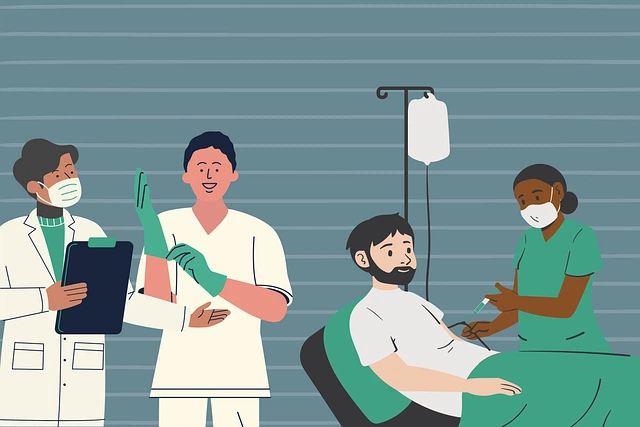What is a Free-Standing Emergency Department (FSED)?
Free-Standing Emergency Departments (FSEDs) are specialized facilities that provide emergency medical services independently of traditional hospital settings. Unlike conventional emergency rooms (ERs) within hospitals, FSEDs are standalone entities equipped to handle urgent and emergency medical conditions without being part of a larger hospital infrastructure. This model has been considered since the 1970s and has gained renewed attention in recent years, especially for its potential to serve rural and underserved communities.

Types of FSEDs
FSEDs are broadly categorized into two types:
-
Off-Campus Emergency Departments (OCEDs):
- Affiliated with and operated by hospitals.
- Function similarly to outpatient departments.
- State-licensed and financially integrated with the parent hospital.
- Must comply with the same regulatory standards as hospital-based emergency departments.
-
Independent Free-Standing Emergency Centers (IFECs):
- Operated by for-profit, non-hospital entities.
- Offer services comparable to OCEDs but are not subject to federal emergency department regulations.
- Face different financial and regulatory challenges, particularly concerning Medicare and Medicaid reimbursements.
How FSEDs Operate
FSEDs are designed to provide immediate and urgent care, similar to traditional ERs. They offer a range of services including medical imaging, laboratory services, and physician consultations. Most patients at FSEDs are walk-ins, though they are equipped to handle ambulance arrivals.
Billing and Insurance
- OCEDs: Bill for services under the Medicare Part B Fee Schedule, similar to traditional emergency departments. Private insurers typically recognize them as in-network providers.
- IFECs: Do not have the same Medicare and Medicaid billing privileges as OCEDs. Private insurers often consider them out-of-network, complicating the financial sustainability of these centers, especially in areas with high Medicare and Medicaid populations.
Regulatory Environment
The regulation of FSEDs varies significantly by state. While some states have specific legislation allowing the establishment and operation of IFECs, others restrict these to OCEDs or have no relevant legislation. This regulatory diversity impacts the prevalence and operational models of FSEDs across the United States.
Employment Considerations in FSEDs
When evaluating employment opportunities at FSEDs, medical professionals should consider several factors, similar to those for traditional ER roles, including salary, benefits, scheduling, and professional development opportunities. However, additional factors are unique to FSEDs, especially IFECs:
- Revenue Cycle Management: IFECs face longer revenue cycles due to their out-of-network status with many insurers, potentially leading to delays in compensation.
- Patient Volume and Case Variety: IFECs may not see the same volume or diversity of cases as OCEDs, which could impact the professional growth and skill enhancement of healthcare providers.
- Resource Availability: Some IFECs might lack the comprehensive resources available in larger, hospital-affiliated emergency departments.
- Financial Viability: The unique regulatory and financial challenges faced by IFECs can affect their long-term sustainability.
Advantages of Working in an FSED
Despite these challenges, FSEDs offer numerous advantages to healthcare professionals:
- High Patient Satisfaction: FSEDs typically boast shorter wait times and more convenient locations than traditional ERs, contributing to high patient satisfaction rates.
- Quality of Care: Studies indicate that the quality of care in FSEDs is comparable to that provided by hospital-based ERs, even for serious and time-sensitive conditions.
- Profit Potential: Lower overhead costs compared to hospital ERs create significant opportunities for profit, which can translate to competitive compensation and benefits for staff.
- Professional Experience: The unique setting of FSEDs offers a blend of emergency care practice in a community-focused, slower-paced environment.
Growth and Future of FSEDs
As of 2017, there were 669 FSEDs in the United States, with a majority affiliated with hospitals. The number of FSEDs is expected to grow as the demand for accessible medical care increases. However, their financial viability will continue to evolve based on changes in insurer regulations, federal and state laws, and economic conditions.
FSEDs represent a significant innovation in the provision of emergency medical care, particularly for underserved and rural communities. Understanding their operational models, regulatory environment, and employment considerations is crucial for healthcare professionals considering a career in these facilities.

With a career focused on healthcare Business Development and Service Line performance, Paul had recently been at the forefront redefining the traditional In-house Provider Recruiting role. In his position as Medical Staff Development Officer at University Hospitals, Lake Health Region in Cleveland, Ohio, Paul integrated collegial interaction, analytics, and provider experience expertise to drive a differentiated recruitment strategy.
Paul has brought that knowledge and experience to Client Sourcing at PracticeMatch. Joining PracticeMatch in 2021, Paul supports Client Sourcing’s pro-active recruiting model that generates a robust prospect pool, creates an effective and efficient recruiting experience, and identifies key metrics to ensure optimal performance for the client. Paul has a commitment to learning, development and passion for building a team of recruiting professionals to leverage their national footprint which benefits its client organizations and their candidates.